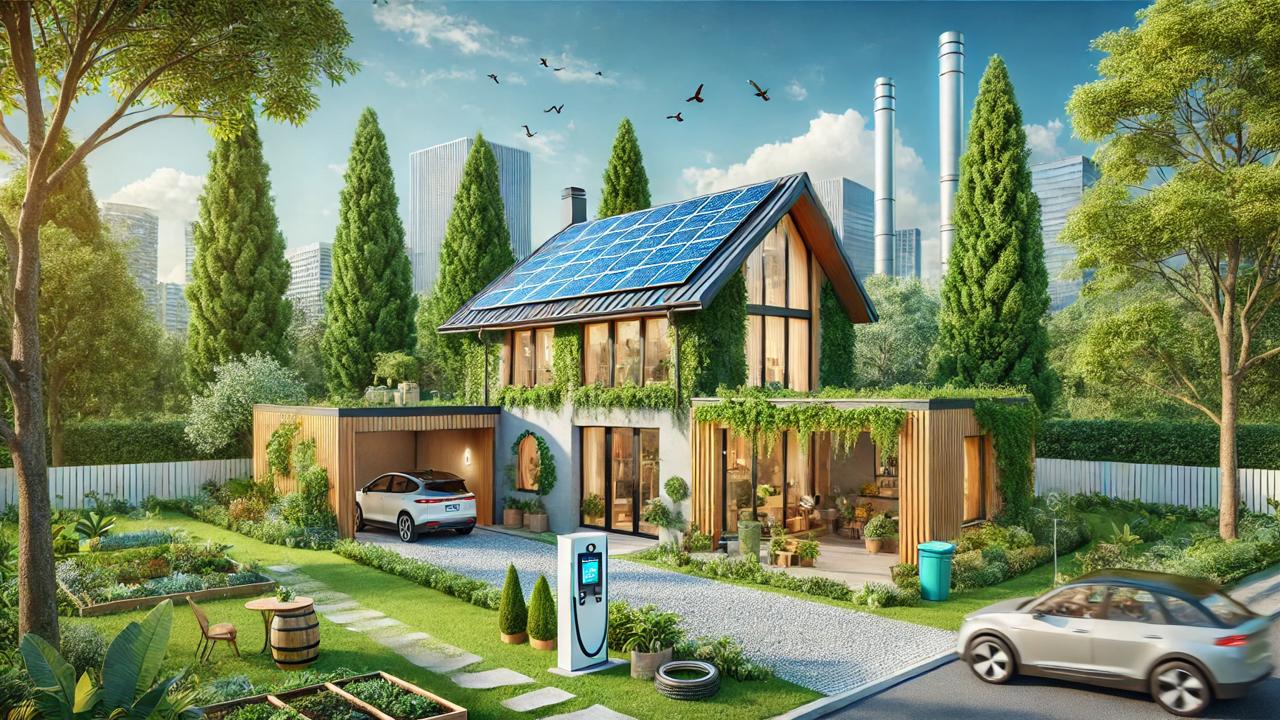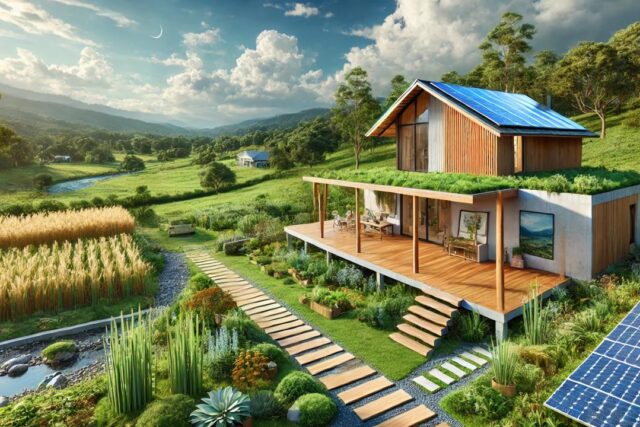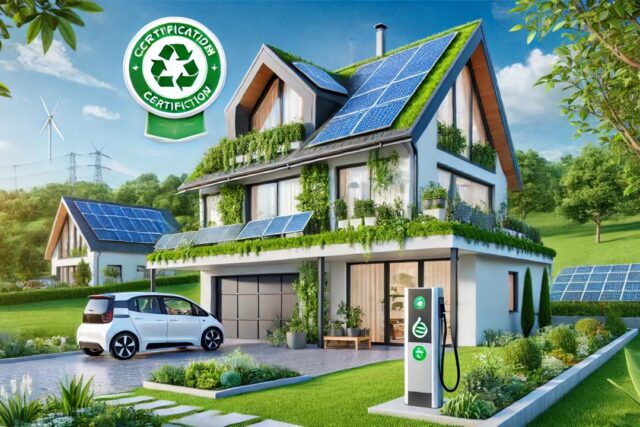
With growing concerns about climate change and environmental sustainability, homeowners are increasingly looking for ways to make their properties more eco-friendly. From small lifestyle changes to significant home upgrades, there are numerous steps you can take to reduce energy consumption, minimize waste, and create a healthier living space.
This guide will explore practical and cost-effective ways to green your home while also showing you how to reduce household carbon footprint effectively.
1. Energy-Efficient Upgrades
One of the most impactful ways to create an eco-friendly property is by improving energy efficiency. Not only do these changes help the environment, but they also lower utility bills.
Install LED Lighting
Switching to LED bulbs reduces energy consumption significantly. LED lights last longer and use up to 80% less energy than traditional incandescent bulbs.
Upgrade to Energy-Efficient Appliances
Appliances account for a considerable portion of household energy use. Look for ENERGY STAR-rated refrigerators, dishwashers, washing machines, and other household appliances that consume less power.
Invest in Smart Home Technology
Smart thermostats and automated lighting systems allow homeowners to regulate energy use more efficiently. By programming temperature settings and controlling lighting remotely, you can cut down on unnecessary energy consumption.
2. Sustainable Water Use
Water conservation is another essential aspect of an eco-friendly property. Simple changes can make a significant impact on reducing water waste.
Install Low-Flow Fixtures
Low-flow showerheads, faucets, and toilets help reduce water usage without sacrificing performance. These fixtures significantly lower your monthly water bills while preserving natural resources.
Harvest Rainwater
Rainwater harvesting systems allow homeowners to collect and store rainwater for irrigation and other non-drinking purposes. This practice reduces dependency on municipal water supplies and cuts water expenses.
Fix Leaks Promptly
Even a small leak can waste thousands of liters of water over time. Regularly inspecting and fixing leaks ensures that water is used efficiently in your home.
3. Sustainable Landscaping
A green outdoor space plays a crucial role in making a home environmentally friendly. Thoughtful landscaping reduces water consumption and enhances biodiversity.
Choose Native Plants
Native plants require less water, fertilizer, and maintenance. They also support local wildlife, including pollinators like bees and butterflies.
Install a Drip Irrigation System
Drip irrigation delivers water directly to plant roots, minimizing waste and ensuring efficient absorption. This system is an excellent alternative to traditional sprinklers, which often lead to water runoff.
Create a Composting System
Composting kitchen scraps and yard waste reduces landfill contributions and enriches soil naturally. A compost bin helps create nutrient-rich fertilizer without relying on chemical alternatives.
4. Renewable Energy Solutions
Switching to renewable energy sources significantly enhances an eco-friendly property. While some options require an initial investment, they lead to long-term savings and energy independence.
Solar Panel Installation
Solar panels generate clean electricity and reduce reliance on fossil fuels. Many governments offer incentives and tax rebates to encourage homeowners to adopt solar energy.
Wind and Geothermal Energy
For properties in suitable locations, small wind turbines and geothermal heating systems offer additional sustainable energy solutions. These alternatives provide consistent energy while minimizing environmental impact.
5. Sustainable Building Materials and Insulation
If you’re renovating or building a home, consider using eco-friendly materials to reduce your carbon footprint.
Opt for Recycled or Reclaimed Materials
Recycled wood, steel, and glass reduce waste and limit the need for new resource extraction. Reclaimed materials add character and sustainability to home projects.
Improve Insulation
A well-insulated home requires less heating and cooling, leading to lower energy bills. Use eco-friendly insulation materials like wool, cotton, or recycled cellulose.
Choose Low-VOC Paints and Finishes
Traditional paints release volatile organic compounds (VOCs), which contribute to indoor air pollution. Low-VOC or zero-VOC paints improve air quality and promote a healthier living environment.
6. Reducing Household Waste
Waste management is crucial for an environmentally responsible home. Reducing, reusing, and recycling help minimize waste production.
Adopt a Minimalist Lifestyle
Owning fewer, high-quality items reduces consumption and waste. Opting for durable products that last longer rather than disposable alternatives.
Use Reusable Products
Switching to reusable shopping bags, water bottles, and food containers significantly reduces plastic waste. Making these small changes helps limit landfill contributions.
Implement a Recycling System
Proper waste sorting ensures recyclables are processed correctly. Many cities offer curbside recycling programs that make it easier for homeowners to dispose of items responsibly.
7. Transportation and Mobility Choices
Your property’s eco-friendliness extends beyond your home. The way you commute and travel also impacts sustainability.
Invest in an Electric Vehicle (EV)
Electric cars produce fewer emissions than traditional gasoline-powered vehicles. Installing a home EV charging station encourages clean transportation.
Use Public Transportation or Carpool
Whenever possible, opt for public transit, biking, or carpooling to reduce fuel consumption and lower emissions.
Install a Bike Rack
Encouraging cycling as a primary mode of transportation promotes a healthier lifestyle while reducing dependence on cars.
8. How to Reduce Household Carbon Footprint Effectively
Lowering your home’s carbon footprint requires a combination of energy-efficient habits and sustainable living practices.
- Unplug devices when not in use to prevent phantom energy drain.
- Switch to renewable energy providers if solar panels aren’t an option.
- Reduce meat consumption by incorporating more plant-based meals.
- Shop locally to minimize transportation emissions.
- Grow your own vegetables to cut down on store-bought packaging waste.
Conclusion
Creating an eco-friendly property is not only beneficial for the environment but also improves your quality of life and reduces expenses. By adopting energy-efficient practices, using sustainable materials, and reducing waste, homeowners can make a meaningful impact. Whether through small adjustments or significant renovations, every step toward sustainability contributes to a healthier planet. By following these strategies, you can embrace a greener lifestyle while also enjoying the financial benefits of reduced energy and water bills. The journey to an eco-friendly home starts with conscious decisions that lead to long-term sustainability.






Leave a Reply
You must be logged in to post a comment.